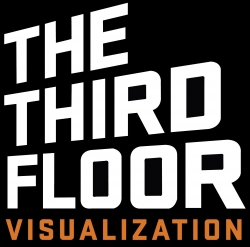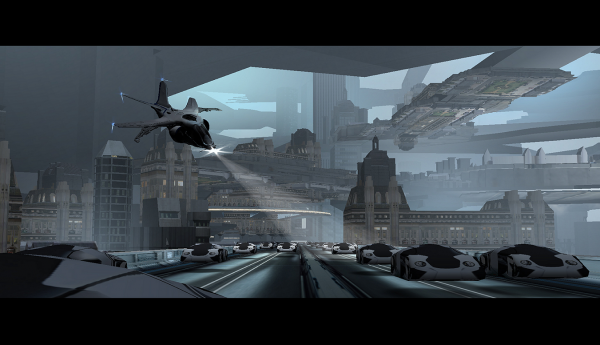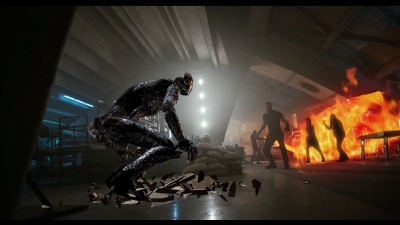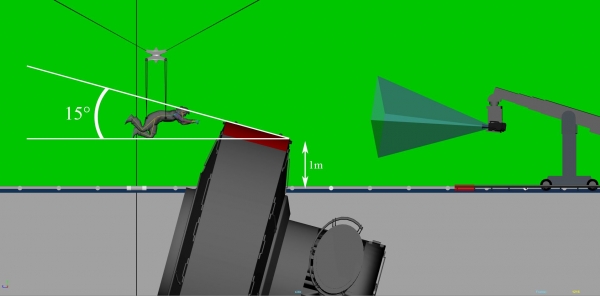What is Previs and why is it revolutionising the film industry?
 What is Previs and why is it revolutionising the film industry?
What is Previs and why is it revolutionising the film industry?
By Matt Gallagher - August 2016
In the conference room of a sleek office in central London, Duncan Burbidge, the General Manager of the UK arm of previs company The Third Floor, scrutinises the computer in front of him. He’s pondering what to show me as research for my book, Breaking into UK Film and TV Drama.
With previs typically being done months or years before the final product hits the viewing public, much of what the company has recently worked on is not yet in release.
Eventually, he finds a video and plays it up on the big screen in the conference room. It’s a two-minute action sequence played out in computer animation. It looks like a story sequence in a well-animated video game depicting a sci-fi world. They had created the entire ‘world’ of the show in CGI; crafting futuristic vehicles and weapons, and the sets they would inhabit. They were even able to make the character look like the lead actor after he was cast in the role.
It was a segment that was conceptualised by director Len Wiseman and executed by the team at The Third Floor in just a few weeks. It was designed purely to show studio chiefs what the filmmakers’ vision might look like. The execs liked it and green lit a $125m budget based on what they saw. That film was the remake of Total Recall starring Colin Farrell. Though the finished shots and visual effects are what audiences see on screen, these visuals were informed and architected with help from the previs outlines created with the filmmakers by The Third Floor.

As a company, The Third Floor began when George Lucas wanted animated storyboards for Star Wars Episode III: Revenge of the Sith, so he could work out the choreography of the battle sequences. Lucas assembled a team of artists who immediately connected and spurred each other on. They went on to form The Third Floor and from their initial home in California, they now have an office in London too. Their name comes from the storey of Skywalker Ranch where the previs team met and worked on Episode III. Their logo is a picture of a gothic-looking house at night, with the lights beaming out of the third floor, as if to emphasize their whole-hearted, ‘round-the-clock devotion to the directors’ vision.
We spent an afternoon discussing the use of modern previs as I researched my book, Breaking Into UK Film and TV Drama, and the extract below explains what it is. Burbidge described creative techniques and cutting-edge technology that seemed to unlock new possibilities in filmmaking that many directors have yet to discover and those who have are still only beginning to explore its possibilities. Previs isn’t just advanced animated storyboards, it’s much more than that.
In Chapter 2 of the book, we look at over 30 different departments and 140 different job roles involved in the film making process. We describe the department functions, individual job titles, skills and responsibilities, and the structure and hierarchy of the team.
Here, in an exclusive extract of Breaking Into UK Film and TV Drama, is the entry for Previs.
Previs
ABOUT
Previsualization, or previs, has existed since the start of filmmaking, with storyboards and replica models being used to plan a shoot. Modern previs uses digital technology, and enables a director to explore, devise, develop and express their vision for sequences of their film. Previs companies work closely with the director, production designer and VFX supervisor to create the template for complicated sequences. Indeed, in a 2011 interview with American Cinematographer magazine, Avengers director Joss Whedon described previs as an “invaluable tool to get everybody on the same page.”
Previs is aimed at being able to realize the best creative ideas most effectively. Previs artists and editors model and 3D-animate digital versions of the action so that a director can see and test concepts quickly, determine how best to tell the story and make the most of their time on set. They can also work out potential camera angles and edits, and discover what coverage they might need.
There is a range of creative tools and workflows at the disposal of the filmmakers who use previs. But we will look at four of the key methods. The first is a kind of advanced animated storyboards; the second utilises motion capture; the third is a method of studio filming called Simulcam, where previs environments and characters are composited live in the shoot; and the fourth involves virtual cameras or virtual reality (VR), where a director can view 3D-modelled scenes and environments to explore possible camera coverage or see what their set might look like, and make changes before a physical set is ever built.
The director and producer will work with the previs team to negotiate and deploy the right combination of tools and workflow for each and every project.
 Previs is sometimes used to create a proof-of-concept sequence, so that studio executives can see a director’s vision before deciding to greenlight an expensive project. This process is known as pitchvis.
Previs is sometimes used to create a proof-of-concept sequence, so that studio executives can see a director’s vision before deciding to greenlight an expensive project. This process is known as pitchvis.
Traditional previs is used during development and pre-production, as described above, while the third stage is termed techvis and is used to determine how to shoot scenes effectively using physical cameras, rigs, greenscreen, special effects, digital effects and other techniques.
The final stage, post-vis, is used at the end of the shoot, when temporary previs visuals are inserted into the live plates as a guide, primarily for the editor and VFX department to help them get a sense of the completed shot, but also to enable the director, studio and test audiences to understand the finished product.
ROLES
Previs Supervisor
The previs supervisor is responsible for the creative direction of previsualization projects. They
collaborate with the director and VFX Supervisor, and liaise with other HODs to help visually conceptualise the film. Supervisors have overall responsibility for the management of the previs team.
KEY SKILLS: Strong storytelling skills; strong knowledge of cinematography and shot creation
Previs Production Management
The previs production manager and production coordinators keep track of the budgets, schedule and talent resources. They also track the progress of each previs shot throughout production.
KEY SKILLS: Strong project management skills.
Previs Shot Creator
Previs shot creators produce previs shots based on scripts, storyboards or outlines from directors, piecing together elements, setting them in motion and ‘filming’ them with virtual cameras.
KEY SKILLS: Animation; an understanding of digital cinematography - camera movement, lenses, lighting and composition - and storytelling.
Previs Asset Builder
A special breed of 3D modellers, previs asset builders create environments, props, characters for the previs shot creators to use.
KEY SKILLS: A strong sense of design; an understanding of topology, rigging, lighting, texturing and surfacing.
Previs Editor
The previs editor cuts together the previs, adding dialogue, music and sound effects. They participate in story discussions with the previs supervisor, VFX supervisor and director, and can suggest additional shots to be visualized.
KEY SKILLS: Strong storytelling skills; strong sound design skills; some knowledge of cinematography and VFX.
Junior Previs Shot Creator or Junior Previs Asset Builder.(Entry-level roles)
